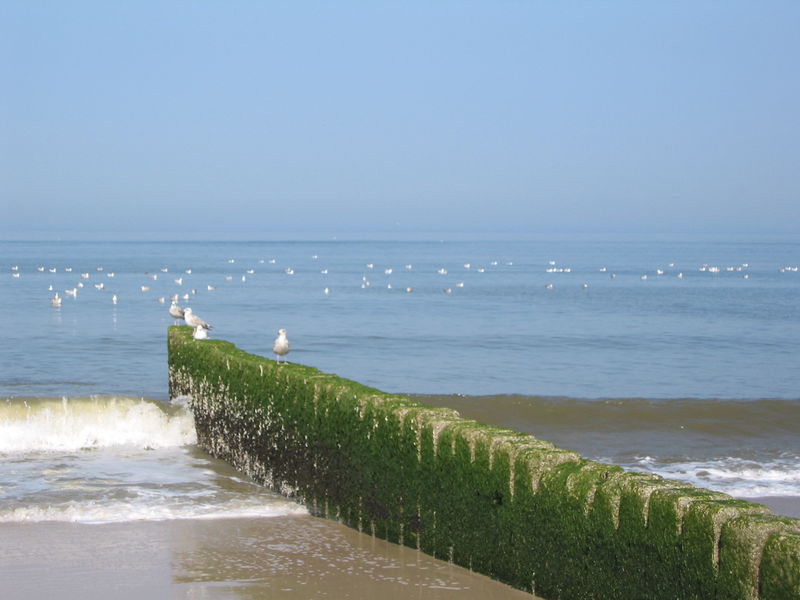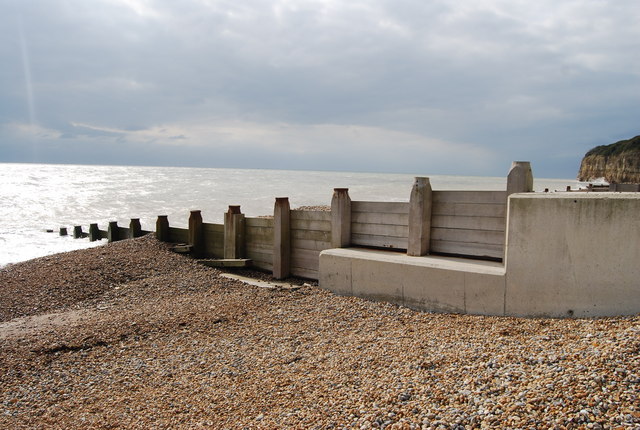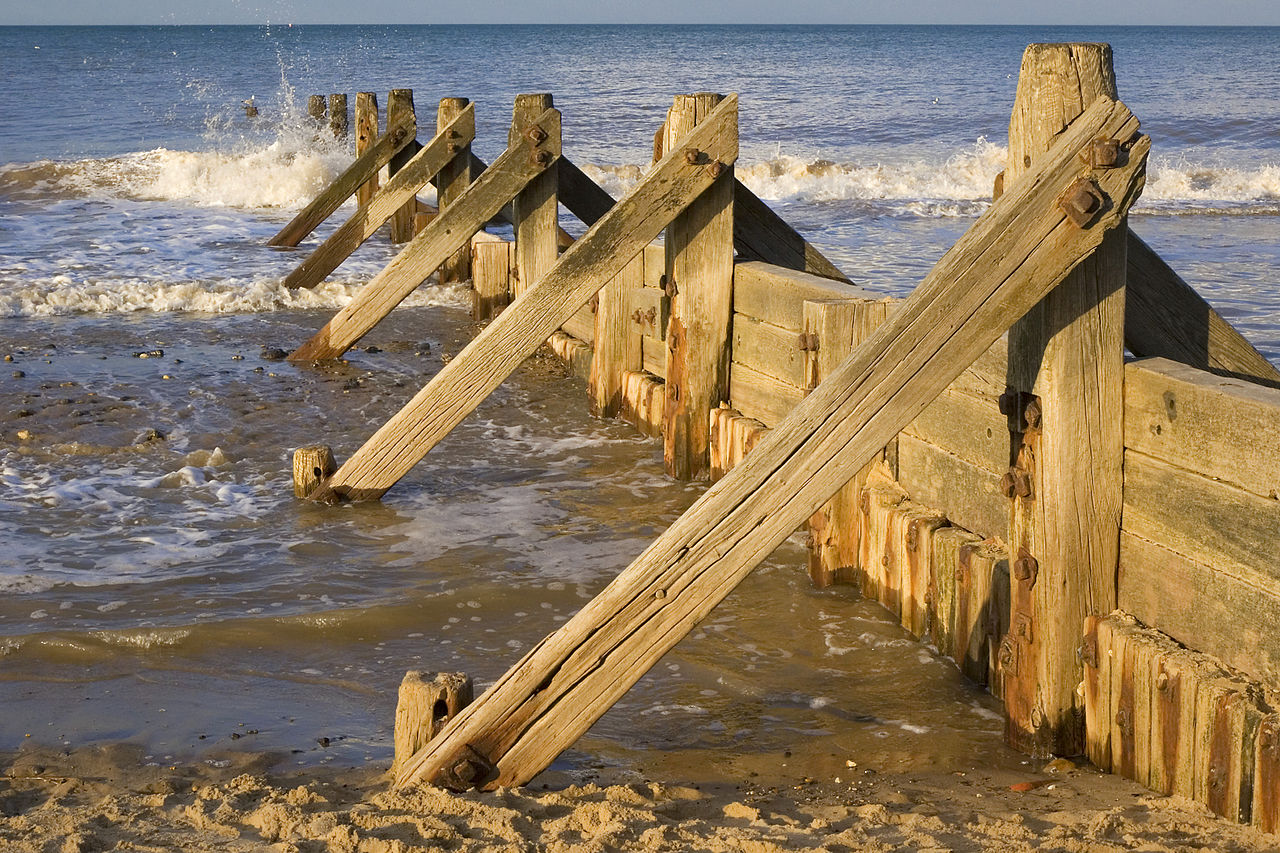Definition
A groyne is normally a straight structure perpendicular to the shoreline. Groynes work by blocking (part of) the littoral drift, whereby they trap/maintain sand on their upstream side. Groynes can have special shapes and they can be emerged, sloping or submerged, they can be single or in groups, the so-called groyne fields. Groynes are normally built as rubble mound structures, but they can also be constructed in other materials, such as concrete units, timber, etc. A groyne is an active structure extending from shore into sea, most often perpendicularly or slightly obliquely to the shoreline. Adequate supply of sediment and existence of satisfactorily intensive longshore sediment transport are the sine qua non conditions of groynes efficiency. Catching and trapping of a part of sediment moving in a surf zone (mainly in a longshore direction), as well as reduction of the sediment amount transported seawards, are the principle functions of the groyne. n structural terms, one can distinguish between wooden groynes, sheet-pile groynes, concrete groynes and rubble-mound groynes made of concrete blocks or stones, as well as sand-filled bag groynes. As revealed by experiments, during weak and moderate wave conditions, the groynes partly dissipate energy of water motion and lead to sand accumulation in the vicinity of a shore, thus causing its accretion. Under storm waves, mainly approaching the shore perpendicularly, the role of the groynes decreases and a beach is partly washed out. Groynes are frequently used. However, applied as a self-contained shore protection measure it is a very dubious solution. This is because of unfavourable side effects which they can cause locally. Satisfactory supply of sand and existence of longshore sediment transport are fundamental conditions for efficiency of groynes. The groynes role distinctly increases if they are applied together with other (soft) shore protection measures, like artificial beach nourishment or shore nourishment.(Coastal Wiki, Groyne, accesed on Sept. 2015)
Co-benefits and impacts
Protection of the shore by use of one groyne only is most often inefficient. Therefore, shore protection by groynes is designed as a group comprising from a few to tens of individual structures. A single groyne, besides its positive influence on the shore, causes numerous side effects, mainly in the form of coastal erosion on the lee side of the structure. In the case of a group of groynes, the above effect appears on the lee side of the whole system. The erosion is also observed in direct vicinity of the structures, particularly when waves approaching the shore perpendicularly predominate. Between the groynes, huge mass of water is accumulated which in turn leads to appearance of compensating flows along the structures, causing local erosion of the seabed. With respect to the surf zone width, during severe storms the groynes are “short” structures, with frequently occurring erosion around them, while under weak wave conditions they become “long”, thus helping in sand accumulation and widening of the beach. Loss of contact between a groyne and the shore in an unfavourable effect. In such a case, longshore flows are generated between the shoreline and the groyne root. These flows are the reason for washing out of the beach.(Coastal Wiki, Groyne, accesed on Sept. 2015)
Conditions
Appropriate choice of shapes, dimensions and location of groynes is crucial for effectiveness of shore protection. Groynes length is usually related to mean width of the surf zone and on the other hand to their longshore spacing. An active length of the groyne basically increases together with the growth of wave-to-shoreline angle. While designing groynes, one should remember that they should not trap the whole longshore sediment flux. Numerous investigations and observations suggest that within optimal solutions the groynes spread seawards not further than to 40-50% of the storm surf zone width. Effectiveness of the groynes depends also on their permeability. The groynes which are either structurally permeable or submerged (permanently or during high water levels) allow more sediment to pass alongshore through them, in comparison to impermeable or high groynes. Most often used, pile groynes are usually permeable structures which does not affect their efficiency. The groynes height influences the amount of longshore sediment transport trapped by the groynes. The same groyne can act either as emerged or submerged structure, depending on water level which is subject to changes due to astronomical tides (if they exist), as well as storm surges. Generally, the groynes are designed to stick out about hs=0.5-1.0 m above the beach and the mean sea level (MSL). Too high groynes cause wave reflection, resulting in local scours. (Coastal Wiki, Groyne, accesed on Sept. 2015)Comments
Also known as groin.Case study
Last modified: Nov. 28, 2019, 9:39 a.m.


 Ελληνικά
Ελληνικά


